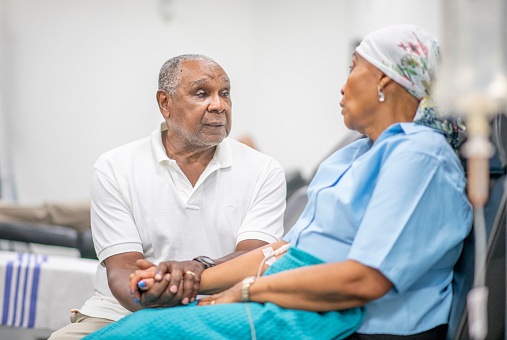
In part two of the randomized, phase III CASSIOPEIA trial, researchers compared maintenance with daratumumab or observation only following bortezomib, thalidomide, and dexamethasone with or without daratumumab (D-VTd or VTd) in autologous stem-cell transplant (ASCT)-eligible patients with newly diagnosed multiple myeloma (MM). Lead study author, Philippe Moreau, MD, reported that daratumumab maintenance every eight weeks for two years significantly reduced the risk of disease progression or death versus observation only.
In part one of the study, patients were randomly assigned to D-VTd or VTd. In part two, those patients were randomly assigned to daratumumab 16 mg/kg intravenously every eight weeks or observation only for up to two years. The primary endpoint assessed was progression-free survival (PFS). Their findings were published The Lancet Oncology.
A total of 886 patients (458 [84%] of 543 in the D-VTd group and 428 [79%] of 542 in the VTd group) were randomly assigned to daratumumab maintenance (n = 442) or observation only (n = 444). At a median follow-up of 35.4 months (interquartile range [IQR], 30.2-39.9) from second randomization, median PFS was not reached (95% CI, not evaluable [NE]-NE) with daratumumab, compared with 46.7 months (40.0-NE) with observation only (hazard ratio 0.53, 95% CI 0.42-0.68, p < 0.0001). Analysis of PFS results showed a significant interaction between maintenance and induction and consolidation therapy (p < 0.0001).
The most common grade III or IV adverse events were lymphopenia (16 [4%] of 440 patients in the daratumumab group vs. eight [2%] of 444 patients in the observation-only group), hypertension (13 [3%] vs. seven [2%]), and neutropenia (nine [2%] vs. 10 [2%]). Serious adverse events occurred in 100 (23%) patients in the daratumumab group and 84 (19%) patients in the observation-only group. In the daratumumab group, two treatment-related adverse events led to death (septic shock and natural killer-cell lymphoblastic lymphoma).
Based on the findings, the study’s authors concluded that daratumumab maintenance every eight weeks for two years improved outcomes versus observation only in newly-diagnosed patients with MM. They noted that “longer follow-up and other ongoing studies will shed further light on the optimal daratumumab-containing post-ASCT maintenance treatment strategy.”







 © 2025 Mashup Media, LLC, a Formedics Property. All Rights Reserved.
© 2025 Mashup Media, LLC, a Formedics Property. All Rights Reserved.